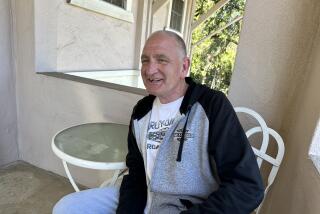Treatment Called Best Way to Cut Cocaine Use : Health: RAND study says programs to control addiction are seven times more cost-effective than law enforcement methods in reducing consumption.
- Share via
WASHINGTON — Drug treatment programs are seven times more economical than law enforcement efforts in reducing the use of cocaine and appear to be the most effective method of all, according to a major study released Monday by the RAND think tank.
Making such programs available to all heavy cocaine users would reduce consumption of the drug by a third, the study said.
While the work by Santa Monica-based RAND tends to support the treatment-based approach to drug addiction favored by the Clinton Administration, it raises questions about another Administration policy--trying to stem the flow of drugs from the countries that process and distribute them.
The study, based on research by C. Peter Rydell and Susan S. Everingham, was said to be the first of its kind to compare the cost-effectiveness of various cocaine control programs.
Fred W. Garcia, a deputy director in the White House national drug control policy office, which helped fund the $340,000 study, hailed the conclusion on the relative value of treatment. But he was less enthusiastic about evidence that the least effective programs are those designed to control cocaine at its source--primarily in Peru, Bolivia and Colombia.
He said that the study did not take into account other objectives of international drug strategy--such as strengthening U.S. national security, “promoting the development of democratic institutions and the rule of law and fostering economic security and growth.”
The number of cocaine users in the United States has dropped from 9 million in the early 1980s to a little more than 7 million today. Nonetheless, overall consumption stands at its mid-1980s peak because the number of “light users” has declined while “heavy users” have increased, according to the study. Heavy users accounted for more than two-thirds of cocaine demand, up from less than half in 1980.
The study defined heavy use as once a week or more and light use as at least once a year, but not as often as weekly. At the end of 1992, the nation had 5.6 million light users and 1.7 million heavy users, RAND found.
Using 1992 data, the study said that federal, state, local and private sources spent a total of $13 billion for four types of cocaine control programs examined by the study. Domestic enforcement--drug arrests, jails and prisons--accounted for 73% of the cost. Interdiction (trying to stop the drugs from entering the country) accounted for 13% of the cost, and treatment and source-country control, 7% each.
Treatment was defined in the study as a mixture of relatively inexpensive outpatient and relatively expensive residential programs designed to treat both the physical and psychological reasons for addiction. Their average cost was estimated at $1,740 per patient.
*
In finding that treatment for heavy users was seven times more cost-effective in reducing cocaine consumption than domestic enforcement, the study said that annual consumption could be cut 1% if $34 million more were spent on treatment, while $246 million would be needed to achieve the same reduction through domestic enforcement.
Interdiction would need $366 million of additional spending to do the job, while source-country control would require $783 million.
More to Read
Sign up for Essential California
The most important California stories and recommendations in your inbox every morning.
You may occasionally receive promotional content from the Los Angeles Times.













